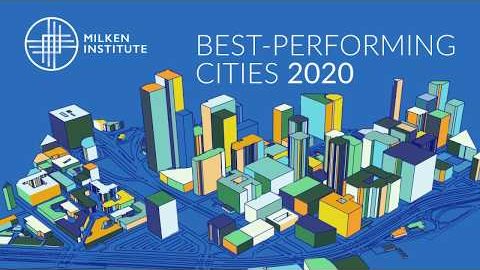
Distance learning solutions to mitigate COVID-19 school closures
Distance Learning Solutions to Mitigate COVID-19 School Closures
Thursday, March 12, 2020
Distance Learning Solutions to Mitigate COVID-19 School Closures
Thursday, March 12, 2020
In response to school closures caused by COVID-19, UNESCO recommends the use of distance learning programmes to limit the disruption of education.
Below is a list of open educational applications and platforms to help schools and teachers facilitate student learning and provide social caring and interaction.While these solutions do not carry UNESCO’s explicit endorsement, they tend to have wide reach, a strong user-base and evidence of impact. Several support multiple languages.
Open educational applications and platforms
- ClassDojo (link is external) – A free app that connects teachers with students and parents to build classroom communities. Teachers can bring parents into the classroom experience by sharing photos, videos, announcements and instant messages with parents. ClassDojo is used in the Colégio Monte Flor primary school in Portugal and featured in the UNESCO-Fazheng case study series. It supports more than 20 languages including Arabic, Chinese, English, French, Japanese, Italian, Korean.
- Edraak (link is external)– An open educational resource in Arabic for school learners and teachers (k-12 education). Arabic and some classes in English.
- EdX (link is external) – Access to free online courses from leading educational institutions worldwide. English
- EkStep (link is external) – An open learning platform with a collection of learning resources in literacy & numeracy. English
- Global Digital Library (link is external) – A digital library that promotes early-grade literacy worldwide by offering digital storybooks and other reading materials available in multiple languages. UNESCO is working together with Norwegian Agency for Development Cooperation (Norad) to promote the Global Digital Library for digital early grade reading worldwide. The GDL collects existing high quality open educational reading resources, and makes them available on web, mobile and for print. The GDL currently offers resources in 43 languages (including Arabic, English and French), and by end 2020 the goal is to provide 100 languages. The platform also facilitates translation and localization of GDL-resources to more than 300 languages.
- ICT in Education Toolkit (link is external) provides education policy makers, planners and practitioners with a systematic process to formulate, plan and evaluate education development programs enhanced by Information and Communication Technologies (ICTs). English
- Khan Academy (link is external) – Nonprofit organization that offers free online courses, lessons and practice. English
- LabXchange (link is external) – An online platform which brings together high-quality content from a variety of sources including videos, assessments, and simulations. In association with Harvard University, Faculty of Arts and Sciences that is part of the UNESCO Chair on Life Sciences and Social Innovation. English
- Lezioni sul sofà (link is external) – A website that has been created by Italian children’s book writers for schoolchildren who are studying from home due to the virus. It includes videos discussing books and different topics of interest surrounding art and literature for students of different ages. Italian.
- Mindspark (link is external) – An adaptive online tutoring system that helps students practice and learn mathematics. The system was shortlisted for the 2018 ICT in Education Prize. English
- Nafham (link is external) – Free Arabic language online learning platform that hosts educational video lessons that correspond to the Egyptian and Syrian curricula. Arabic
- One Billion (link is external) – Child focused application provided by a nonprofit organization to deliver reading, writing and numeracy education. English
- Seesaw (link is external) – A digital portfolio for students to store their work and for teachers and parents to see their progress. The app can be used in over 55 languages. Multiple languages
- Siyavula (link is external) – An open educational resource offering online mathematics and physical sciences education aligned with the South African curriculum. English
- Study Saply (link is external) – An online platform for middle school students. Free until the end of March. Japanese.
- Ubongo (link is external) – A multi-platform education media which uses entertainment, mass media, and the connectivity of mobile devices to deliver effective and localized learning to African families. The media is low cost, small scale and provided by a nonprofit social enterprise. English
Applications and platforms to support live-streaming classes
- Dingtalk (link is external)– DingTalk is a free communication and collaboration platform, which includes video conferencing, task and calendar management, attendance management and instant messages. Available in English and Chinese, but used in countries worldwide.
- Lark (link is external)– A collaboration suite that offers service to schools free of charge without time limit of service. The one-stop suite include services of 200G free storage spaces and video conferencing to support synchronous classes, messenger for connection, online interactive and collaborative document processing for project collaboration , calendar for syncing up the syllabus, and workplace to integrate third-party applications. Available in English, Japanese and Chinese, used in countries worldwide.
- Other well-known free and private platforms for teachers and learners can be found on the internet.
Applications to support production of video lessons, MOOCs and asynchronous classes
- Edpuzzle (link is external) – Edpuzzle is an easy-to-use platform allowing teachers to engage with all students, one video at a time (more than 8 million lessons and more than 20 million students). English.
- Icourses (link is external) – An MOOC platform for universities in China. Chinese.
- Mosoteach (link is external)– An app which provides cloud classes. Chinese.
- Thinglink (link is external) – A digital poster editor that enriches images with notes, links or video clips. This project was a laureate of the 2018 UNESCO ICT in Education Prize. Arabic, Chinese, English, French, Italian.
Applications and platforms in low tech environments
- Can’t wait to Learn (link is external) – Can’t Wait to Learn, an innovative programme providing education to children affected by conflict, was awarded the 2018 UNESCO ICT in education prize. The programme teaches children how to read, write and count by playing educational games on tablet devices, online and offline. The programme is available in both Arabic and English. French is currently being developed.
- Kolibri (link is external)– A free offline resource with over 80,000 pieces of content from UNHCR partners at Learning Equality. English
Assessment tools for e-schools
- SELFIE: Self-reflection tool & mentoring scheme for schools (link is external) – SELFIE (Self-reflection on Effective Learning by Fostering the use of Innovative Educational Technologies) developed by the European Commission, it is a tool designed to help schools embed digital technologies into teaching, learning and student assessment. It can highlight what is working well, where improvement is needed and what the priorities should be. The tool is currently available in the 24 official languages of the European Union with more languages to be added over time. Multiple languages
Applications to support communication between students, teachers and parents
- Teacher Aide Pro (link is external) – A free teacher assistant app in Iran’s android website that offers parents the chance to follow their children’s progress. It includes group messages, curriculum progress, and the option to save lessons. Farsi, English.
- ClassDojo (link is external) – please see above.







